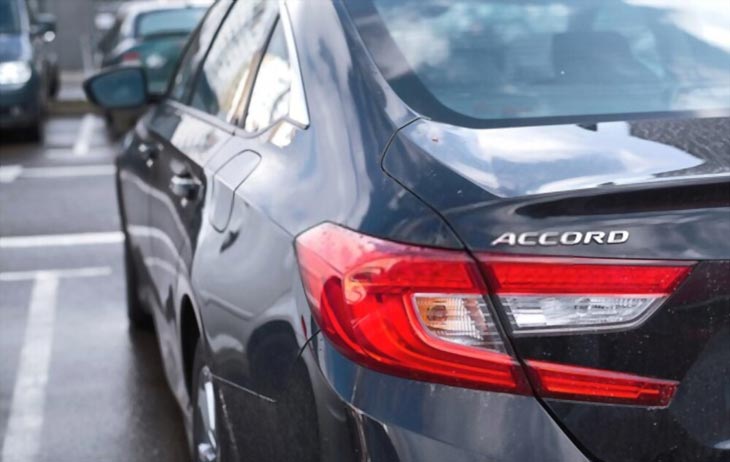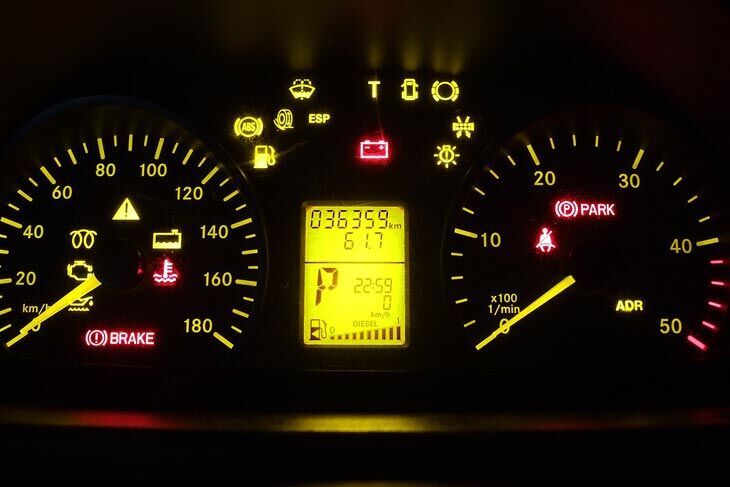
Why is the D blinking on my Honda accord ? Inspecting these 11 issues: Recent automobile service, refueling, tank overfill, newly-installed electronic devices, driving through puddles, water leaks, animal attacks, illuminated dashboard lights, long idle periods without driving, the last driver of the car, and faulty transmissions .
These might shorten your search and bring you closer to the right solution.
1. Has Your Automobile Been Serviced Lately?
Ask yourself this quick question. If the answer is Yes, we highly suspect your mechanic is responsible for the blinking D light on Honda accord .
They might either overlook the sensors reconnection or do so improperly. Another explanation is that these specialists dislodge a connector by accident during routine maintenance.
For earlier Honda models, O2 sensors are often inserted under the oil filter. Lets not rule out the possibility that the technician has contaminated these sensors with oil - an uncommon yet not entirely impossible case.
It often occurs when they try to wipe the grease off the sensor, damaging it in the process.
And what if the car has not yet been serviced? Then the reason behind Honda accord blinking D probably lies somewhere else.
2. Have You Refueled Your Vehicle Lately?
Also, when twisting the cap, confirm you can detect at least three clicking sounds, which implies you have applied the correct torque. Otherwise, the issue of D light blinking Honda accord will refuse to fix itself.
3. Have You Overfilled Your Tank?
Do you have a tendency to fill the gas tank to the brim? Quit it now, particularly if you own one of Hondas latest models.
The tank reaches its limit when the pump nozzle turns off automatically; never try to exceed those boundaries.
Most modern US automobiles must retain gasoline exhausts for further burning and recycling in the engine compartment.
As a result, tank overfill causes the gasoline to leak into small vacuum filters and pressure switches, causing some emission devices to get clogged. Evap canisters are a case in point.
And of course, as these gadgets are submerged in gasoline, the blinking D light Honda accord will flash off a warning signal.
4. Have You Recently Set Up Any New Electronic Devices or Had Automotive Experts Do So For you?
If they still are, we suggest you recheck the fuses with some help from scan tools or voltmeters. Should nothing work, the best thing to do is to return that car to the service center responsible for that job.
5. Did The Lights Turn On After You Drive Through Deep Puddles?
This issue is not a common case, but it still occurs nonetheless.
Most oxygen sensors are positioned underneath the car, within or close to the catalytic converter, where the internal temperatures might exceed 600 degrees.
After one or two hours of driving time on the expressway, the vehicles exhaust might boil over.
As a result, driving through muddy patches might cool the O2 sensor too rapidly, shattering all the material within. Sounds like your situation? Then take the vehicle to a dealer or a local repair shop.
6. Does Your Vehicle Suffer from Excessive Humidity Due to Water Leaks?
7. Vivez-vous dans des régions rurales avec beaucoup de petits animaux?
Les animaux créent plus de problèmes automobiles que vous ne le pensez, dont deux sont des dommages et des odeurs nauséabondes.
Les écureuils, les tamias, les rats et les souris sont des coupables notoires, faisant des ravages sur n'importe quel système électrique auquel ils peuvent accéder.
Given the right opportunity, they even set up nests and stockpile foods for winters, chewing on wires to sharpen their teeth for effective hunting.
Plusieurs fabricants fournissent des faisceaux de câbles avec du ruban adhésif pouvant repousser les souris. Ils ne sont pas toujours efficaces, mais au moins c'est un excellent début!
Les signaux d'attaque animale sont:
- L'odeur de pipi dans le système AC
- Noix, des aliments à chiens séchés à la glace cachés dans la baie de moteur ou la boîte à gants
- Tapis grignés
- Souples AC ou chauffage bruyants
8. Y a-t-il d'autres feux d'avertissement illuminés sur votre tableau de bord?
Il produit une tension trop basse ou trop dans le réseau, ce qui entraîne un éclairage collectif.
9. La voiture est-elle restée inactive pendant longtemps sans aucune conduite?
Les véhicules stationnés sont vulnérables à un tas d'attaques et de problèmes techniques.
Critter invasion, dying battery, broken shift solenoid, and rusted brake rotors can cause severe pulsation in brake pedals and trigger the check light to illuminate.
Étant donné que personne n'était là pour garder un œil sur la voiture, il est tout à fait difficile de déterminer le problème exact ici. Nous vous recommandons de compter sur des mécanismes de confiance dans de tels cas.
10. Qui était le dernier conducteur de cette voiture?
Still want to find a one-size-fits-all answer instead? Then your best bet is to erase the transmission codes entirely, which resets the light to its original state.
However, we must warn you that this second solution is not always successful. Make sure to write down those codes before your deletion so that you can still remember what they were if the problem recurs.
Conclusion

This article has examined all relevant facets that might explain the Honda accord blinking D light .
Damage might be less obvious during the first few weeks, luring you into a false sense of security. But in fact, with no on-time treatment, your car might encounter serious safety problems.
Tackle the dilemma immediately, and feel free to contact us for more assistance if needed.
